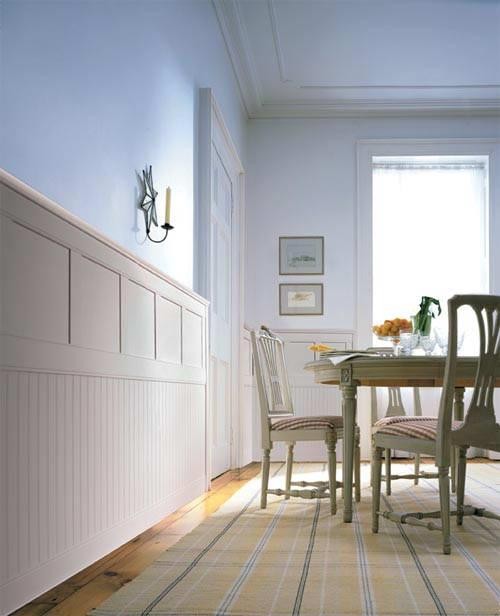 Loading... Please wait...
Loading... Please wait...- My Account
- Order Status
- Wish Lists
- Gift Certificates
 View Cart
View Cart - Call Toll Free (888) 460-6324
Wainscoting
Posted on Aug 23rd 2013
 Wainscoting is a building feature that has been around for hundreds of years. Currently, it is gaining more and more popularity in the interior design world. It was originally designed in a variety of form and function to provide some insulation from the cold and to protect the bottom half of the walls from dirt and damage. Throughout the years, wainscoting has evolved to suit different architectural styles and design elements. Wainscoting now encompasses beadboard, planking, and raised or recessed panel style designs. There is also a wainscot paneling used to beautify staircases. Beadboard pattern wainscoting has evolved as the most prevalent pattern.
Wainscoting is a building feature that has been around for hundreds of years. Currently, it is gaining more and more popularity in the interior design world. It was originally designed in a variety of form and function to provide some insulation from the cold and to protect the bottom half of the walls from dirt and damage. Throughout the years, wainscoting has evolved to suit different architectural styles and design elements. Wainscoting now encompasses beadboard, planking, and raised or recessed panel style designs. There is also a wainscot paneling used to beautify staircases. Beadboard pattern wainscoting has evolved as the most prevalent pattern.
Beadboard wainscoting is either installed as tongue and groove boards (individual planks) or as sheets of paneling, the latter being the more, up-front cost-effective option. Beadboard wainscot systems consist of a baseboard, planks (or boards or panels), and a top cap, quite a simple system. In fact, beadboard's self-explanatory name comes from the rounded bead and groove pattern, including the bead along the edge that disguises the joint between the adjoining panel or plank. Hundreds of years since its inception, wainscoting is still used to dress up areas that get a lot of wear and tear. Using paintable beadboard wainscoting in bathrooms and mudrooms is probably the most popular use of this style of wainscot paneling, while stainable woods in a beadboard panel design are typically used in more formal areas of your home.
Tongue and groove planking is gaining popularity by designers and homeowners alike and can have a beadboard pattern. Our planking has a beaded pattern on one side and a flat plank design on the reverse side; either side can be exposed when installed! Planking is popular in nearly any room and lately, we have seen a trend wherein planking is installed horizontally on a wall for an entirely different look than original vertical installations.
Both our panel and planking style of wainscoting are used primarily to cover the lower portion of all the walls in a room or hallway, but more and more often, we see full walls with our wainscot paneling. Sometimes just one 'feature wall' in a room covered from floor to ceiling, and sometimes all the walls are covered.
Whatever form of wainscoting you deem to be the best fit for your home, New England Classic will have the product to serve your needs.

